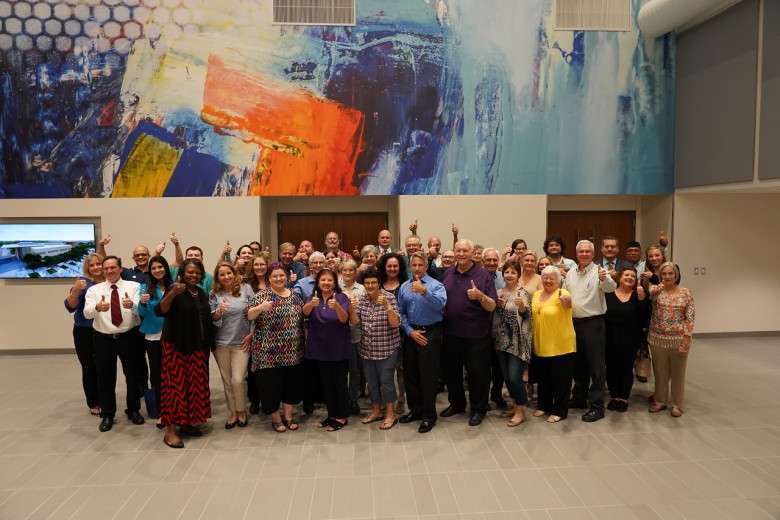Voters Say "Yes" to COM Bond

Voters within the College of the Mainland Taxing District overwhelmingly approved a $162.5 million bond referendum on Tuesday, Nov. 6, paving the way for the construction of three new academic buildings on the Texas City campus.
Voters favored COM with 24,313 voters, or 66.79 percent, supporting the bond referendum while 12,087 voters, or 33.21 19 percent, voted against.
The approved bond referendum now paves the way for COM to change the landscape of its aging campus with the addition of three new buildings, allow for the addition of new programs and be able to accommodate its growing enrollment.
“This is truly a new beginning for College of the Mainland. Our sincere thanks go out to all of those who believe in us and support our mission,” COM President Dr. Warren Nichols said. “Approval of this bond referendum allows the college to continue and expand on its commitment to our students by offering new career opportunities and expand services to this great community.”
Aside from when the college district was first created in December 1966 and a subsequent bond referendum in May 1970, voters had twice voted down bond measures sought by the school.
This time around, the college mirrored the request under the bond referendum to the needs in the school’s Academic Master Plan. The plan was created as a result of student and regional workforce demands. The college serves as an economic engine for the region, which is experiencing growth in the petrochemical, medical and construction sectors.
The approved bond package will mean the average taxable home valued at $120,809 will see taxes incrementally increase to about $141.55 a year, or $11.80 a month.
A COM Bond Advisory Committee made up of 40 community members from throughout the taxing district worked with the college to finalize the bond request.
Included in the bond package is:
- New, 160,000-square-foot STEAM/Allied Health Building
- New, 90,000-square-foot Industrial Careers Building
- New, 60,000-square-foot Student Success Building
The three-story, STEAM (Science, Technology, Engineering, Arts and Mathematics)/Allied Health Building will allow the college to expand its popular nursing program and the cyber security networking lab. New programs being created and that will be housed in the new building are chemical, civil, electrical and mechanical engineering tech programs as well as surgical tech, imaging tech, dental hygienist and physical therapy assistant.
Allied Health programs currently offered at the COM Learning Center –North County in League City – pharmacy tech, nursing assistant, medical assistant and medical coding - will be moved and taught in the new building.
The Industrial Careers building calls for the expansion of the college’s Process Technology program, the addition of an instrumentation & electrical program, relocate the Occupational Safety & Health Technology and HVAC programs as well as the Gulf Coast Safety Institute from a leased location in La Marque and provide for a campus data center.
The Student Success Center would replace the current Administration & Enrollment Center, which recently sustained damage when the concrete foundation cracked and water streamed in and flooded the entire one-story building.
The two-story Student Success Center would consolidate student services such as admissions, financial aid, advising, testing center and the Veterans Center. The building also would house the college’s Leadership Team and relocate campus functions such as marketing, communications and the COM Foundation from an off-site location.
The bond package also calls for additions and renovations to the campus fine arts building as well as expansion of the college’s physical plant and technology upgrades and demolition of the Administration and Enrollment Center, the police station and the Technical-Vocational building.
Voters in 1966 originally approved the construction of the administration building, the Learning Resources Center (library), the Technical-Vocational building, the Math and Science building and a central utilities building. A $4.75 million bond package approved in 1970 covered the cost of building the Fine Arts building, Physical Education complex and Student Center as well as expanding the Technical-Vocational and Math-Science buildings.
